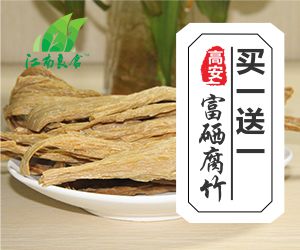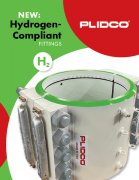Approval is Based on Clinical Studies Conducted in Japan, Europe and North America Confirming the Efficacy and Safety of CUVITRU [Immune Globulin Subcutaneous (Human), 20% Solution]
CUVITRU is Takeda’s First Subcutaneous Immunoglobulin Plasma Therapy in Japan, Delivering on the Company’s Commitment to Reach Patients with High Unmet Needs
OSAKA, Japan & CAMBRIDGE, Mass.--(BUSINESS WIRE)--Takeda (TSE:4502/NYSE:TAK) today announced that the Japanese Ministry of Health, Labour and Welfare has approved the use of CUVITRU™ [Immune Globulin Subcutaneous (Human), 20% Solution] in patients aged 2 years and older with agammaglobulinemia or hypogammaglobulinemia1, disorders characterized by very low or absent levels of antibodies and an increased risk of serious recurring infection caused by primary immunodeficiency (PID) or secondary immunodeficiency (SID)2. The approval marks Takeda’s first subcutaneous immunoglobulin (SCIG) therapy for patients in Japan.
The approval is based on results from a Phase 3 clinical trial that evaluated the efficacy, safety, tolerability and pharmacokinetics of CUVITRU [Immune Globulin Subcutaneous (Human), 20% Solution] in Japanese patients with PID (NCT04346108), as well as two Phase 2/3 clinical trials conducted in patients with PID in North America (NCT01218438) and Europe (NCT01412385). Results from the clinical trial in 17 patients in Japan confirmed its efficacy and safety profile1. No serious or severe adverse events were reported, and CUVITRU was well-tolerated. The most frequently reported adverse reactions were injection site swelling in four patients (23.5%) and injection site erythema in three patients (17.6%)1 during CUVITRU treatment. Previously reported clinical trial results also confirmed the efficacy and safety of CUVITRU.
“We are delighted that CUVITRU, approved in more than 30 countries worldwide, has now been approved in Japan as our first subcutaneous immunoglobulin treatment for agammaglobulinemia or hypogammaglobulinemia,” said Naoyoshi Hirota, regional head of research & development for Takeda’s Plasma-Derived Therapies Business Unit in Japan. “Patients with immunodeficiency often contract serious infections, including pneumonia, sepsis and other recurring infections. Immunoglobulin replacement therapy is the standard of care, and we are proud to offer a new flexible dosing regimen to patients in Japan.”
Timely diagnosis of PID is problematic in Japan and treatment with immunoglobulins is currently much lower than in other parts of the world3,4. Patient demand for plasma-derived therapies (PDTs) is expected to grow significantly in the coming years, and Takeda is leading regulatory efforts and discussions to elevate the standard of care in Japan and introduce more of Takeda’s PDT portfolio into the country.
“Takeda is proud to build on our long and rich Japanese heritage by continuing to invest in and expand our PDT offerings to address the needs of patients,” said Kristina Allikmets, head of research & development for Takeda’s Plasma-Derived Therapies Business Unit. “Hand in hand with our recent investment in an end-to-end global plasma manufacturing facility in Osaka, the approval of CUVITRU marks the start of our commitment to bringing our broad and differentiated global PDT portfolio to immunodeficient patients in Japan over the next decade.”
About Agammaglobulinemia or Hypogammaglobulinemia
Agammaglobulinemia is an inherited disorder caused by a gene defect that blocks the growth of normal, mature immune cells called B lymphocytes, and produces antibodies5. Hypogammaglobulinemia describes a condition in which patients have low levels of antibodies and can be both due to inherited genetic conditions, or caused by secondary effects, such as chemotherapy, certain comorbid disorders, or the use of immunosuppressants2. Individuals with any form of antibody deficiency frequently experience recurring infections, and immunoglobulin replacement therapy can increase the level of antibodies in the body.
About Primary Immunodeficiency and Secondary Immunodeficiency
Primary immunodeficiency (PID) describes a heterogenous group of more than 480 rare genetic diseases wherein part of the immune system is missing or not functioning properly6. Secondary immunodeficiency (SID) may be defined as an impairment of the immune response resulting from conditions or factors extrinsic to the immune system. SID may occur as a consequence of malnutrition, metabolic disorders, use of immunosuppressive medications, chronic infections, malignancies, or severe trauma7. Due to their impaired immune system, patients with PID and SID may be more susceptible to infection and it may take longer to recover from it. In patients with antibody deficiency and increased susceptibility and/or persistent infections, substitution with functional antibodies (immunoglobulin replacement therapy) is the standard of care to support the immune system's functioning7.
About CUVITRU™ [Immune Globulin Subcutaneous (Human), 20% Solution]
CUVITRU is an Immune Globulin Subcutaneous (Human) (IGSC), 20% Solution indicated in Japan as a treatment for agammaglobulinemia or hypogammaglobulinemia in patients aged 2 years and older. It was developed as a treatment to help prevent infection in adult and pediatric patients with PID or SID. As of May 2022, it has been approved in over 30 countries.
CUVITRU Product Overview in Japan
|
Brand Name |
CUVITRU 20% S.C. Infusion 2 g/10 mL, 4 g/20 mL, 8 g/40 mL |
|
Generic Name |
pH4-Treated Acidic Normal Human Immunoglobulin (Subcutaneous injection) |
|
Indications |
Agammaglobulinemia or Hypogammaglobulinemia |
|
Dosage and Administration
|
Normally, 50 ~ 200 mg (0.25 ~ 1 mL)/kg body weight of human immunoglobulin G is administered subcutaneously once a week. In case of every 2 weeks regimen, 2-fold higher dose than once-a-week regimen (100 ~ 400 mg [0.5 ~ 2 mL]/kg body weight) will be administered subcutaneously. The dose and dosing frequency of once-a-week or every-2-weeks regimen may be adjusted according to the patient's condition. |








